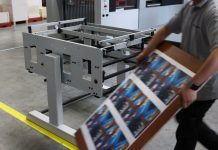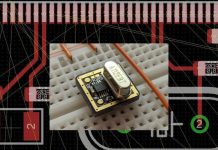TPR material is popular because of its unique aggregate of rubber-like residences and the benefit of processing traditional of plastics. Its flexibility, durability, and brilliant elasticity make it perfect for a huge range of programs, which include footwear, toys, automobile elements, and medical devices. TPR’s recyclability and cost-effectiveness beautify its enchantment, supplying an environmentally friendly alternative to standard rubber and sure plastics. To read more about TPR material go now to the following website.
The material’s versatility permits it to be molded into numerous shapes and colored to fulfill precise design necessities. Its slight resistance to chemical compounds and UV mild, combined with precise tensile strength and abrasion resistance, make TPR suitable for both indoor and outdoor programs. Furthermore, TPR may be over-molded onto other materials, providing additional layout flexibility. Those traits make TPR a favored preference throughout more than one industry.
Difference between TPR and TPE
Although thermoplastic flexible (TPR) and thermoplastic elastomer (TPE) have a spot with a comparative gathering of thermoplastic elastomers, they have several exceptional differences in creation, properties, and ventures. Realizing those varieties is critical to settling on the material that best suits your particular longings.
Composition
This blend provides TPR with the malleability of elastic and the processability of plastic, making it bendy, strong, and smooth to shape while warm. TPE (Thermoplastic Elastomer), on the other hand, is a huge class of copolymers joining plastic and elastic, intended to display every thermoplastic and elastomeric property, considering flexibility in applications.
Hardness Range
One massive contrast between TPR and TPE is the scope of hardness they can accomplish. TPR normally has a smaller hardness range, frequently giving a gentler, more rubbery hardness level. TPEs, then again, can be formed to cover a more extensive scope of hardnesses, from exceptionally delicate and flexible materials, for example, gel-like materials, to harder, more unbending materials.
Processing Properties
TPR (Thermoplastic Rubber) is without problems processed using widespread thermoplastic strategies along with injection molding, extrusion, and blow molding, which permits efficient production and complex component design. TPE (Thermoplastic Elastomer) additionally blessings from similar processing strategies, making it extraordinarily adaptable for diverse programs. Both substances can be reheated and reshaped a couple of times, improving their production flexibility and price effectiveness. The benefit of processing for both TPR and TPE simplifies manufacturing and reduces the want for specialized equipment.
Characteristics and Performance
TPR (Thermoplastic Rubber) gives amazing flexibility, elasticity, and durability, maintaining its shape and performance underneath repeated stress and varying temperatures. It presents proper chemical resistance, making it suitable for difficult environments. TPE (Thermoplastic Elastomer) is known for its adaptability, consolidating the flexibility of elastic no sweat of plastics. It reveals excessive elasticity, temperature resistance, and chemical resistance, tailored to unique desires depending on the kind. Each substance supplies reliable overall performance across numerous packages.
Applications
TPR (Thermoplastic Rubber) is widely used in shoes for flexible, durable soles, in toys for safety and luxury, and in-car components for put-on-resistant components. It additionally seems in family goods like grips and handles. TPE (Thermoplastic Elastomer) unearths application in clinical devices for its biocompatibility, in client electronics for flexible cables and protecting cases, and in sports activities devices for surprise-soaking up elements. Each substance is flexible, addressing diverse enterprise wishes with their precise properties.
Final Words
At the same time as TPR and TPE percentage similarities in their blend of plastic and rubber properties, they cater to distinctive wishes and programs. TPR is brilliant for its cost-effectiveness, sturdiness, and ease of processing, making it perfect for shoes, toys, automotive components, and family goods. Alternatively, TPEs offer versatility, customization, and biocompatibility, suitable for scientific devices, purchaser electronics, sports activities devices, and car programs.














